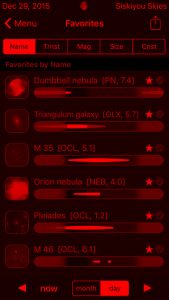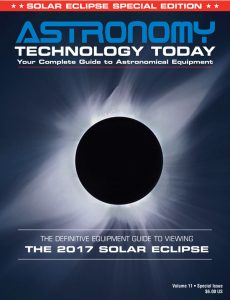Joshua Bury’s latest version of his iOS astronomy observation planning app, Observer Pro 2.1, is available in the Apple App Store.
 New updates to the app include:
New updates to the app include:
– The Featured list is now much more useful: your location, local horizon, and the current lunar phase are now used to provide a list of objects that are prime for observing.
– Added option to show an object’s catalog name rather than common name when browsing lists.
– Correct moon image orientation for Southern Hemisphere sites.
– Fixed bug that made it impossible to leave the Observing List screen after rearranging items.
– Other bug fixes and other improvements.
Observer Pro was designed, ground up, specifically for advanced astronomy planning. No more guessing when that galaxy will emerge from behind that dastardly tree; no more estimating how many hours you’ll be able to image an object. Now, answers to these and other critical planning questions are right at your fingertips.
Feature highlights include:
– More than 14,000 deep-sky objects listed, all with close-up reference images – there is no need for additional downloads after the initial installation of the app;
– Measure your local horizon in minutes with your iPhone;
– Unique charts remove all guesswork from predicting object visibility – your house, trees, local mountains, or any other obstructions are factored into all visibility charts;
– Maintains a list of your favorite observing sites, each with its own local horizon, allowing comparison of object visibility between sites to identify the optimum spot for setting up;
– Integration of 7Timer astronomical weather forecasts for your observing sites, viewable without leaving the app;
– In-app tutorial (in Settings) explains how to maximize effectiveness of all of the app’s many features;
– The simple, intuitive interface makes all of the app’s powerful features readily accessible.
Observer Pro 1.1 is priced at $13.99US. For more information, visit the Apps page on the Apple App Store.
###
 The Astronomy Technology Today editorial staff would like to take this opportunity to remind you of the availability of our Solar eclipse equipment guide – The Definitive Equipment Guide to the 2017 Solar Eclipse. Our goal with the 40 page publication is to provide an easy-to-consume introduction to the technological options for viewing and imaging the Great Solar Eclipse. We cover the gamut of options available including building you own solar viewer, solar glasses, smart phones, DSLR cameras, using astronomy telescopes, solar telescopes, using binoculars, solar filters (including a DYI filter option), CCD astro cameras, astro video cameras, webcams and much more. You can view the guide on our website here – its free and there is no requirement to sign up to read the guide.
The Astronomy Technology Today editorial staff would like to take this opportunity to remind you of the availability of our Solar eclipse equipment guide – The Definitive Equipment Guide to the 2017 Solar Eclipse. Our goal with the 40 page publication is to provide an easy-to-consume introduction to the technological options for viewing and imaging the Great Solar Eclipse. We cover the gamut of options available including building you own solar viewer, solar glasses, smart phones, DSLR cameras, using astronomy telescopes, solar telescopes, using binoculars, solar filters (including a DYI filter option), CCD astro cameras, astro video cameras, webcams and much more. You can view the guide on our website here – its free and there is no requirement to sign up to read the guide.

